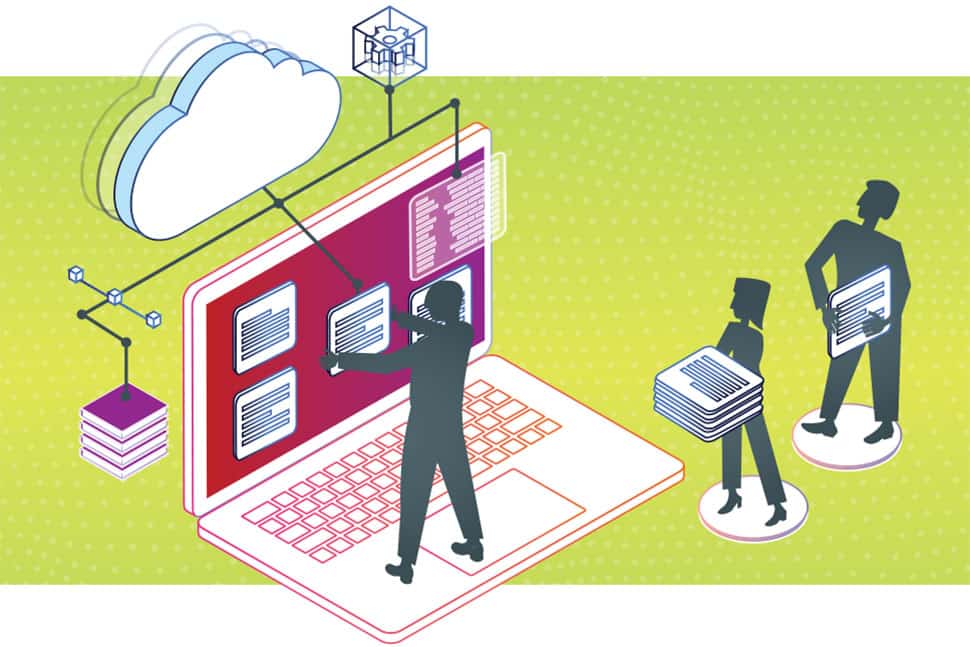1. What is library automation software?
Welcome to OPALS! OPALS is a proven, open-source automated library system. Whether your library has hundreds of resources or millions, there is likely a library just like yours that has adopted OPALS.
Library automation software helps schools, colleges, public, and private libraries with activities including book handling, title acquisition, catalog building, indexing, and circulation. This software automates core library operations that are repetitive in nature and allows librarians to search for titles in a central book record, assign unique serial numbers to titles, categorize books, and keep track of title location within the library system. Library automation system also monitors overdue books, calculates fees for late returns, and maintains records of revenue generated by subscriptions, fines, penalties, and memberships.
2. The benefits of library automation software
- Modernizing library activities: Present-day libraries often manage huge collections of titles and resources. Manual management methods are unrealistic in this digital age, and library automation system replaces past methods (e.g., card catalogs, physical due date cards) of catalog management. By managing an unlimited amount of book records and streamlining data entry and tracking, libraries and their staff members have effectively modernized through the use of such systems.
- Error-free data entry/title tracking: Library automation software uses RFID scanners to log books in and out while capturing patron details, saving librarians from manually entering this information and preventing errors during data entry.
- Mobile access: Popular library automation software systems offer mobile apps for both patrons and staff members. Patrons can easily search the library catalog, submit hold requests, and access available digital resources at any time from their smartphones.
3. Typical features of library automation software
- Barcoding / RFID: Use RFID and barcode technologies to manage checkouts and returns, tagging, shelf management, and anti-theft detection.
- Catalog management: Maintain a catalog of library resources (e.g., books, journals, and newsletters).
- Search: Allow users to search the library catalog and find information such as book availability and location.
- Self checkouts and check-ins: Allow users to check out and return library items using library computers and/or dedicated kiosks.
- Serial and circulation management: Generate unique ID numbers (or tags) for all library content and patrons, and track the status and location of library resources.
4. The cost of library automation software
Most products in the market are available for a one-time licensing fee and can be divided into three pricing tiers based on their starting price.
Price ranges*:

- $90 - $160
- $160 - $725
- $725+
*The pricing included in this list is for the entry-level/lowest pricing offering found on vendor websites on January 7, 2019. These ranges correspond to the 25th, 75th, and 100th percentiles of pricing information gathered from vendor websites of sample products.
The above list summarizes pricing for the base plans of most library automation system products. Enterprise or premium products that are priced higher often include additional features such as advanced support, built-in accounting modules, and integration with third-party applications.
5. Considerations when purchasing library automation software
- Ease-of-use paired with great support offerings. It can be difficult for any non-technical user to learn a new software's interface, features, and functionalities. Before making a purchase, libraries should ensure that the system they choose has a short learning curve backed by quality support that is ready to help their team whenever they're stuck or unable to resolve issues on their own.
- Trials/Demos. Before purchasing a library automation system, you should test the software to ensure it adequately meets your needs. After you test a few different library automation tools, you can make a better, more informed decision about which system is right for your library.

6. Relevant library automation software trends
- Artificial intelligence (AI) will improve patron experience: AI is making waves in various markets, and while it has not yet made a significant impact in the library sphere, some library automation system software are being improved by AI applications. Artificial intelligence within library automation software can improve patron experiences by tracking data around their book and author preferences, average reading time, and more, and make recommendations for future content. This data will help libraries identify popular books, authors, categories, and publications to cater their catalogs to their patrons, and maximize their limited funds.
- Shift from on-premise to cloud-based library automation system software: Many libraries have begun shifting from traditional, on-premise software development that historically required heavy IT investments to a more flexible, cost-effective, cloud-based model. Expect this trend to continue in the coming years as even more libraries seek to cut costs and free staff up to focus on patrons.

Library Automation Systems Comparison System
Sources
- Top 5 Tech Trends for Small Business, Capterra (Date accessed: October 9, 2018)
- Library Automation Software, Capterra (Date accessed: October 9, 2018)
- How to Choose the Right Library Automation Software, Capterra (Date accessed: October 9, 2018)
- Best Libraries in the World (Date accessed: October 9, 2018)